In Digital Marketing
Pricing is a complicated science. Get it wrong and you'll miss potential sales or lose revenue. It's like trying to hit a target with a dartboard.

Management

Changing market prices is even more difficult. It's like trying to blindfold and shoot a target on a moving conveyor belt. For this reason, a robust pricing strategy that responds to market changes is essential for future pricing.
The right pricing strategy to keep up with changing markets can turn pricing into a powerful tool for business growth. Convert more leads into customers and maximize revenue per buyer.
Developing a pricing strategy to respond to changing markets requires data, insight and planning.
This is a comprehensive guide to everything you need to create your own market shift pricing strategy. Start with the basics and then explore practical steps you can take to develop and implement a transformed market pricing strategy for your business.
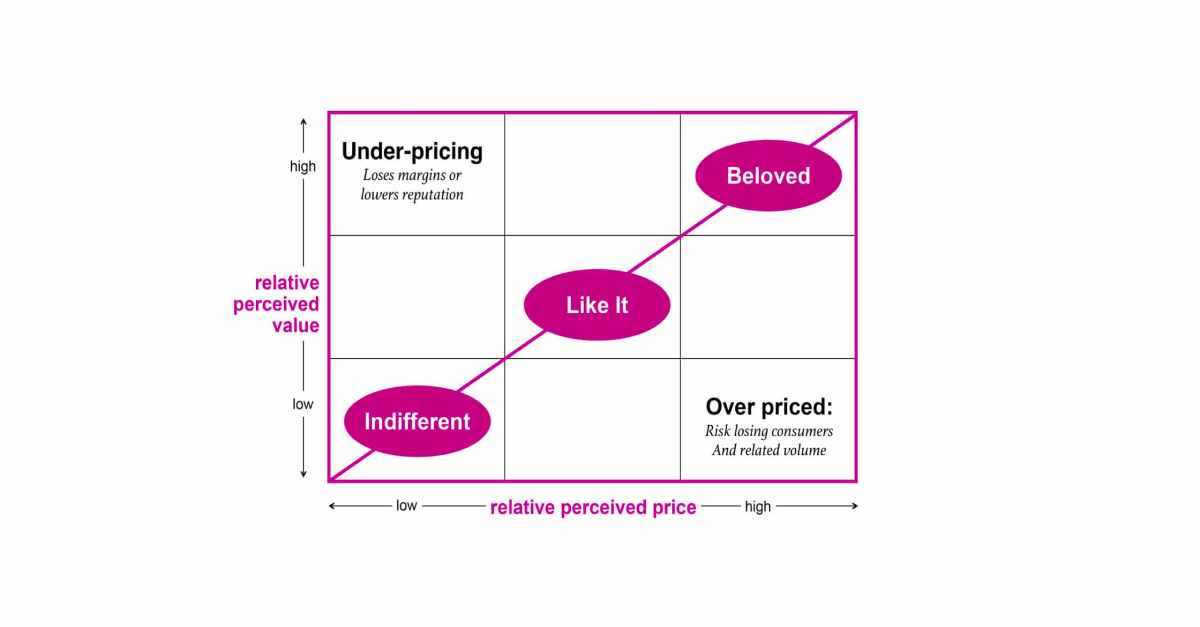
Pricing strategy: perceived value vs price
3 classical pricing strategies
Cost-based pricing
This is one of the simplest strategies ever. Also known as cost-plus pricing. Businesses set prices based on the cost of producing or purchasing goods and services. This approach works well in a stable economy where prices do not fluctuate significantly and there are no competitors charging lower prices.
Competitive pricing
This approach focuses on what the customer is paying in the market rather than what it costs to produce the item. Competitive pricing is especially helpful if your customers are less price sensitive.
Competitive pricing is also called competition or competition-based pricing. Take your competitor's price as a benchmark and cut, raise or adjust your price.
Competitive pricing is easy to implement because you let the competition do the hard work. A slightly lower price than your competitors is especially effective in a highly competitive and saturated market. For example, searching for "computer mouse" on Amazon brings up a page of nearly identical devices, but with slightly adjusted prices. Faced with this choice, consumers gravitate towards cheaper products, usually not the cheapest due to quality concerns.
A price that is the same or slightly higher than your competitors works well if you offer something your competitors don't. This could include better return policies, better customer service, or batteries.
Value-based pricing
This is the most effective approach to pricing strategy because pricing considers factors other than cost. Consumers believe that it is worth paying higher prices for better quality products and services. Therefore, businesses can charge higher prices than their competitors without losing customers.
Value-based pricing means that businesses charge what consumers think they will pay. It sounds easier than it is.
Value-based pricing is often used when a company has a feature or selling point that their competitors don't have. Suppose Company A and Company B sell laptops with the same specifications, except Company A's laptop is 15 inches and Company B's laptop is 12 inches.
Company A can adopt a value-based pricing strategy considering what the additional 3-inch screen real estate is worth to consumers. How much extra will the buyer pay?
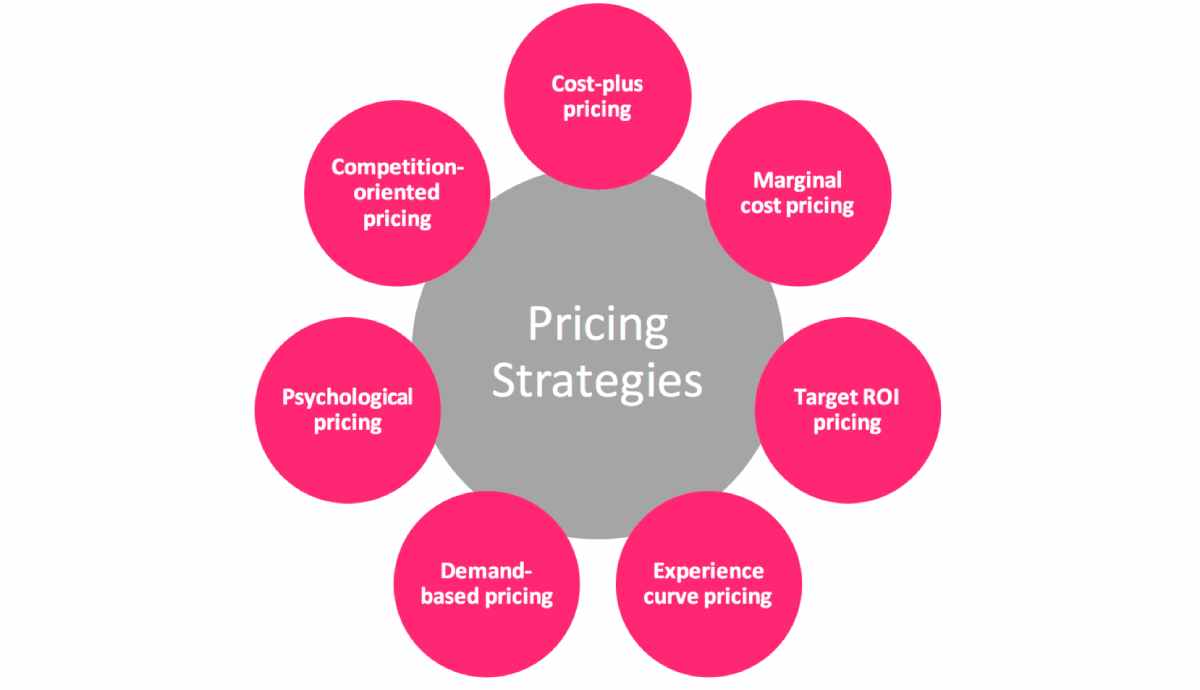
Shifted Market Pricing strategies
What is Shifted Market Pricing?
Market change occurs when the current market is subject to major changes in industry structure.
In a buyer's market, supply is high and demand is low. There is not much competition for buyers. Sellers should start cutting prices.
This will eventually increase demand and shift the market to a more balanced market. This trend will continue until we shift to a seller's market with high demand and low supply, where competition with buyers increases and most sellers raise their prices.
Shifted market pricing is when companies anticipate changes in a changing market and future prices. These small markdowns and price increases help businesses charge the best and best prices in a changing market.
Penetration pricing
Sometimes called “access rate” pricing, companies keep their products and services low. This is a common tactic among startups and an effective way to enter a competitive market, generate high sales, and build trust with customers.
Penetration pricing is the strategy of offering a high quality product or service at a low price. It is often used as an introduction to the market to increase sales first by making it easier before moving to another strategy such as premium or skimming. Prices set for entry often take competitors into consideration, which also leads to competition-based pricing.
The most important part of executing this strategy is building trust and loyalty. Penetration pricing is not sustainable. At some point the price has to go up and when the price goes up you want to keep as many customers as possible.
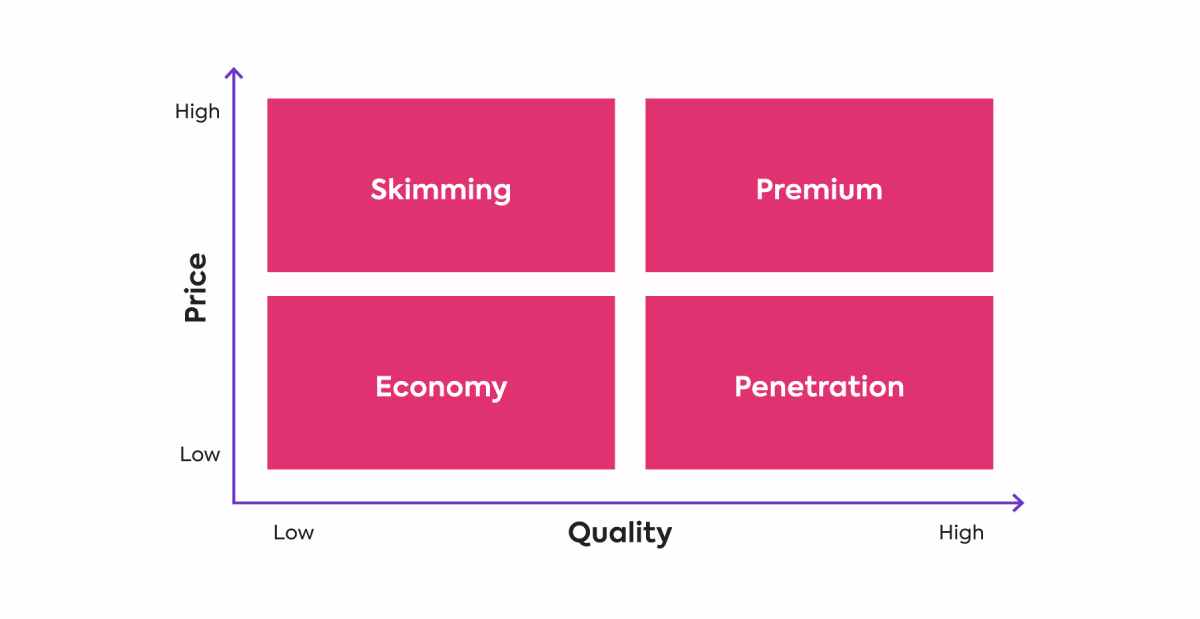
Pricing strategy matrix
Skimming
Also known as skim pricing or price skimming, it is the opposite of penetration pricing.
Skimming is when a company sets a high price and then lowers it over time.
This is common in the smartphone industry, where manufacturers frequently release flagship phones with new market-leading features and incredible price points.
After that, the price is reduced for a number of reasons. For more information on this strategy, see Apple's case study at the end of this guide. price plus price
Also known as cost plus pricing or markup pricing. Take the cost of manufacturing your product and add markup depending on how much you want to win.
For example, a keyboard maker makes a quality mechanical keyboard for $100, but his price is $200. It's 100% premium. Simple, but not very dynamic. This is a common strategy for retailers who sell physical goods. However, this pricing strategy is not ideal for digital services as there are little to no costs associated with mass production and distribution.
Premium pricing
If you are running a high-quality product or service at a high price, then premium pricing may be a good strategy. Best of all, it maintains the perception of a premium product or service that justifies its price.
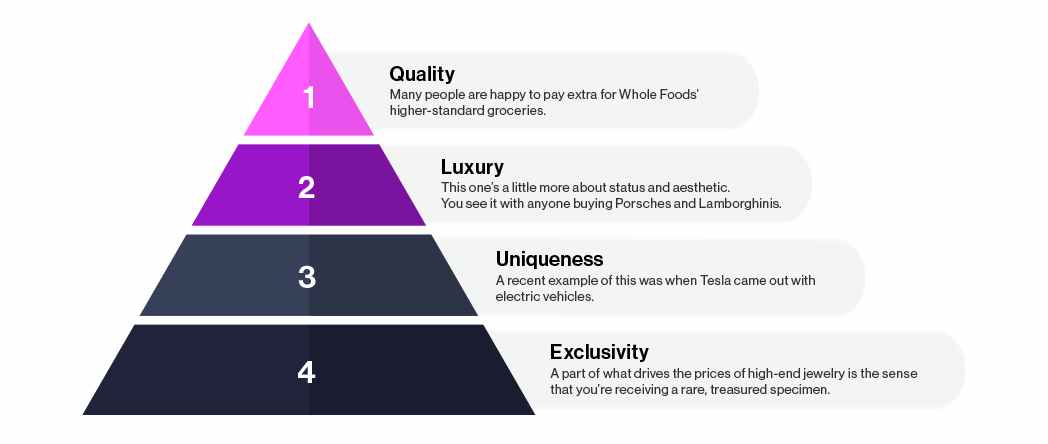
Premium pricing strategy
Also known as fame or luxury prizes. The idea is to price products high to reflect (and enhance) their perceived value relative to their actual value.
Commonly found in fashion, automotive, or technology brands. When pricing your products, also consider the status value associated with your brand. Premium pricing strategies rely on strong marketing strategies and are much more common in the business-to-consumer (B2C) industry than in the business-to-business (B2B) industry.
Economy pricing
The opposite of premium is economy where both quality and price are considered low. It is a combined form of competition-based pricing and cost-plus pricing that aims for the lowest prices in the market and undercuts all competitors.
The idea of economy pricing is to offer products that are cheaper than our competitors. Such pricing results in less revenue per item sold. But in theory, this pricing strategy makes up for it by selling in volume. Think private label grocery or discount chains.
An interesting application of this pricing strategy is a "loss leader" where a brick-and-mortar retailer has priced their product so low that they take a loss on every unit sold. They do this to attract more customers to their stores, who spend their money on more profitable products.
Psychological pricing
Psychological pricing is closely related to marketing. That is, using human psychology to aid sales.
The most common application is the "9-digit effect," where the customer thinks he's better off with the $99.99 product than the $100 product, even though the actual difference is negligible.
Another common use of psychological pricing is when a company artificially increases the price of one product to make another look like a better deal.
For example, a coffee shop sells coffee in small, medium, and large cups. Small mugs are just $2, mediums are $5, and larges are $5.50. In this case, increase the price of the medium coffee to bring it closer to the price of the large coffee. Most customers want a medium size coffee, but a large size coffee is only $0.50 more expensive for him, so the buyer cannot refuse.
Bundle pricing
Bundle pricing is when you list multiple products together and he sells them for one price. There are several ways to use this effectively.
By selling multiple products together, you can offer a more competitive price than selling them individually.
Sell surplus inventory by pooling weak and strong sellers. Bundle new products with established ones and encourage shoppers to try new releases.
This is a versatile strategy that most businesses can use.
Hourly pricing
A popular pricing strategy among freelancers and contractors, hourly pricing charges a flat rate for each hour. It's simple, easy, predictable, and widely used for that reason.
A common criticism of this strategy is that it rewards hours of work over experience and efficiency. It can also be inaccurate as a pricing strategy. The scope of a project can change over time, and it can take time and effort to break down the entire project into precise man-hours.
Dynamic pricing
Also known as surge pricing, demand pricing, or time-based pricing. Dynamic pricing uses algorithms to evaluate factors such as competitive pricing, seasonality, and buyer demand. Dynamic pricing is common in hotels and airlines. The algorithms used are complex and sophisticated, and the goal is to find a price that buyers are willing to pay when they are ready to buy.
Knowing that prices are dynamic also allows buyers to take action out of fear of price increases.
Geographic pricing
Geographic pricing adjusts the cost of a product or service based on geographic location.
Since different countries have different costs of living, companies serving international markets should consider geographic pricing strategies. But it's not just the international market. Ice cream is more expensive on the beach than he is fifteen minutes inland.
Even local businesses have to consider geographic pricing.
Shifted Market Pricing for SaaS products
When it comes to price increases, there are some concerns with SaaS products, including whether users will like the new pricing policy. But when the cost of your business increases in many ways, you'll need to change your prices to keep your income and expenses in balance.
When the prices of competing products in the market start to fluctuate, changes need to be made. As a result of this change, a new price equilibrium is formed in the current market.
Shifted Market Pricing Strategy is a term that describes the process of raising prices when the market changes. The most common reason for this is changes in demand or supply. That is, when the price of goods and services fluctuates.
Developing a shifted market pricing strategy
By analyzing the market, we gained insight and learned market expectations. You are now ready to formulate your “Shifted Market Pricing Strategy”. This includes identifying your target audience and competitors, setting pricing targets, and determining the best pricing strategies and tactics to reach those targets.
Consider demographics and user needs when determining your audience. This way you develop your strategy according to them.
The second step is to find out how your competitors price their products and services. You can find a suitable position by looking at competitors' prices. For example, if the product is his immature SaaS product, it is unattractive to charge as much or more than his SaaS product of a more advanced competitor.
Now that you know your target audience and market competition, what next? Set your goals. Some of these can bring you more money, maintain a consistent profit margin, or simply keep you competitive in the market. Finally, identify pricing tactics that help you achieve your pricing goals. This may mean offering discounts, grouping products and services, and setting tiered pricing structures.
Shifted market pricing strategy implementation
Now that development is complete, it's time to put your modified market pricing strategy into action. This means informing your customers about price changes and developing new marketing activities that fit your strategy.
Don't you want to destroy the relationship of trust you have built with your customers? i know your answer! So you should share your price updates with them. Email newsletters, social media posts, or online meetings are great channels to keep your users informed.
In addition to communicating pricing changes to customers, marketing and sales efforts must be adjusted to reflect the new pricing strategy. This could mean changing selling points, updating pricing and landing pages, or discovering new ways to sell your SaaS product.
Finally, it is important to measure the effectiveness of new market pricing strategies. This can be done through metrics such as sales, customer loyalty and overall satisfaction. By reviewing these metrics regularly, you can make necessary adjustments to your pricing strategy to meet your business goals.
Is price an untapped growth opportunity?
There is evidence that price is an underutilized opportunity for company growth.
According to a ProfitWell report, most companies prioritize acquisition and retention over monetization when trying to drive growth.
No doubt, having more customers is great for growth, but it also means higher CAC and operational costs.
Instead, a focus on effective monetization will help drive steady, strong growth. In other words, a good deferred market pricing strategy allows businesses to get the most value from each customer.
3 key ingredients for a successful shift market pricing strategy
What does a successful shifted market pricing strategy look like? What real-world data can you measure to make sure the strategy is working? A well-executed deferred market What are the consequences of your pricing strategy?
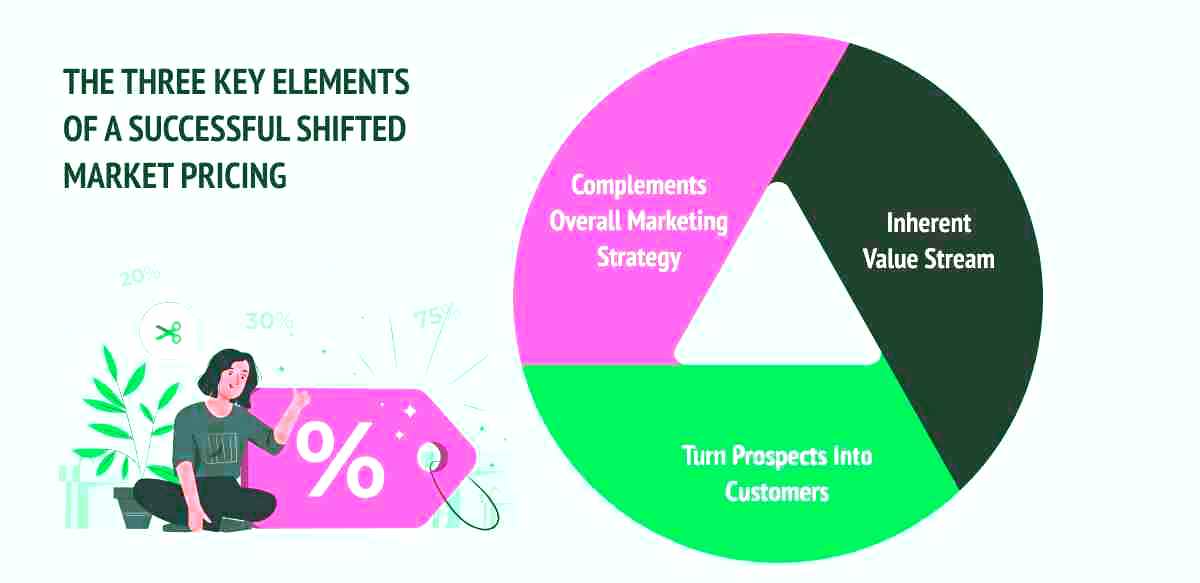
How to develop a successful shift market pricing strategy
The answers to these questions will vary from business to business. Here are three key ingredients for a successful shift market pricing strategy:
Complement your overall marketing strategy
A shifted market pricing strategy works best when backed by a strong marketing strategy. There's no point in pricing unique features if buyers don't know about them.
This is more important for some pricing strategies than others. Marketing strategy is very important when implementing a premium pricing model. No one pays a premium price without good reason.
Inherent value stream
A value stream is the entire process of steps taken to create value for the customer. It starts with the customer and ends with the customer. It starts with noticing that they want something or have a problem to solve. And when that customer gets what they want, it's over.
In this sense, there is a value stream flowing through every team within the enterprise. In short, the inherent problem is related to the idea that the most time wasting effort in any organization is waiting for teams to be decided by leadership.
So one of the advantages of a successful market shift pricing strategy is that it is data driven. This makes it faster and easier to approve price adjustments in response to market changes.
A successful price shifting strategy removes any doubts.
Turn prospects into customers
Customer acquisition is one of the most important factors in growing your business. While some market-changing pricing strategies prioritize short-term profits over sales, the long-term goal of pricing strategies is to convert more prospects into buyers. To achieve this, businesses must focus on customer acquisition.
Customer acquisition begins with understanding the needs and motivations of your target market. To attract new customers, businesses need to identify the ideal buyer persona and create a customer journey map to understand the steps a buyer takes before making a purchase.
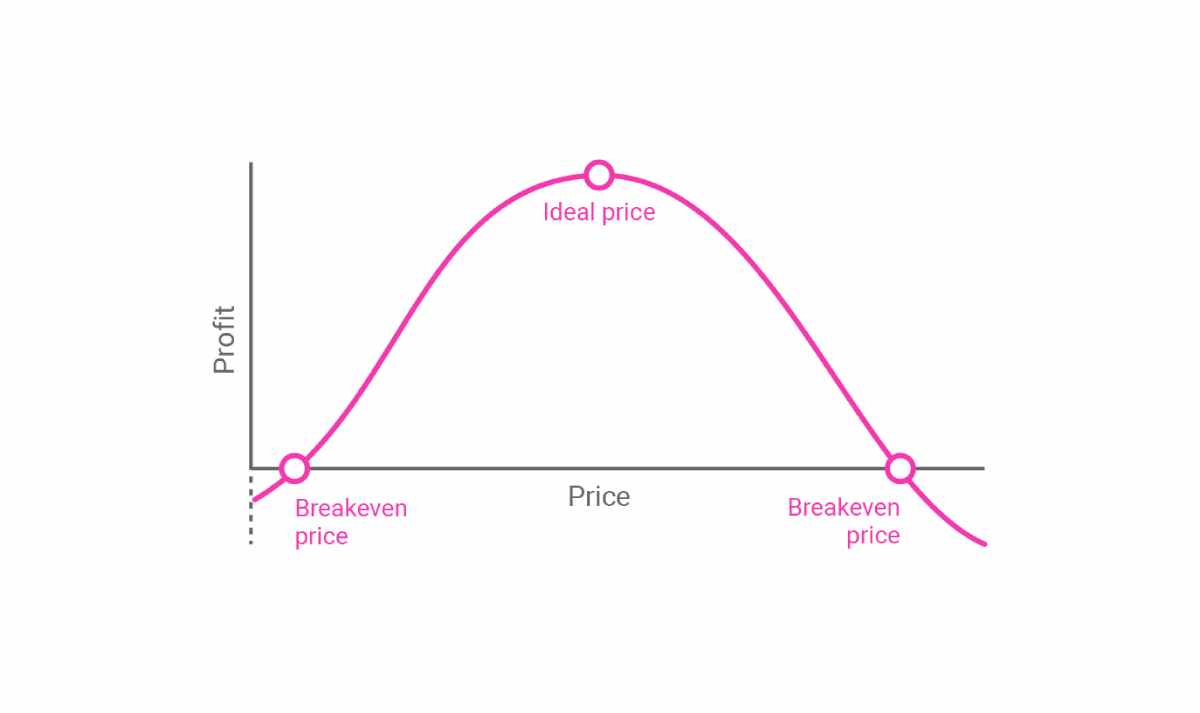
Pricing strategy: finding ideal price
Shifted Market Pricing Strategy according to Ty Voyles
Ty Voyles, co-founder and CEO of Fulcrum Properties Group in Washington, D.C.: "The most important thing in real estate is to get the best possible price in the shortest amount of time and with the least amount of hassle." Knowing the seller's priorities can give you an edge, but the market When prices change, you need to change your thinking.Fill your toolbox with a variety of tools to offer your customers the best prices.
“Pricing is about market positioning,” he says Voyles. “It doesn’t matter what you think the house is worth, what the client wants to sell it for, or what other people say. What a good, willing and able buyer will pay, and what a willing seller will accept.”
To price a changing market, Voyles suggests his three-pronged approach:
- Research and interpretation of market data.
- Communicate value to sellers.
- Evaluate and plan your pricing strategy.

